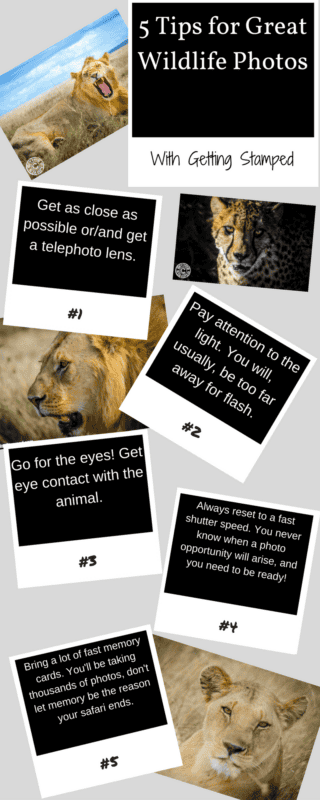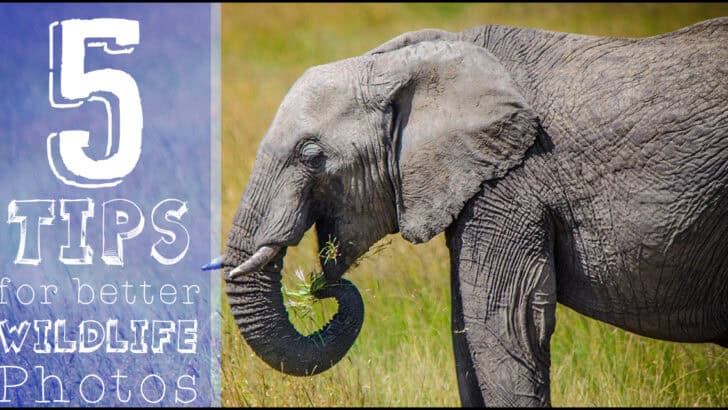I have been lucky enough to get in front of some pretty amazing wildlife during my travels, including a 43-day African safari and a trip out to the Galapagos Islands.
I have summed up my experiences into five short tips that will help you get the best pictures of wildlife—ordered in terms of importance, with the first being the most critical to getting better safari photos.
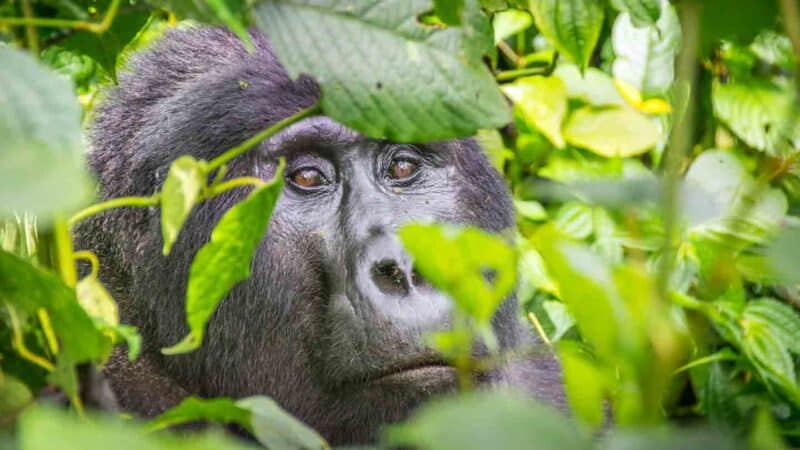
#1.) Get Close!
This may seem obvious, but nothing will impact your shot more than getting as close as possible (or safe) to the animal you will be photographing. In terms of an African safari, close may not always be an option, and that’s where it is important to use longer lenses.
I would recommend having a lens that is capable of 250mm at a minimum. Many safaris get very close to the animals, but generally speaking, the most interesting animals tend to be the furthest away.
To get nice tight shots of big predator species, you are going to want a super telephoto lens more in the range of 400-500mm or higher. Many of my favorite photos used my Sigma 150-600mm lens.
Having a powerful lens will produce shots that are tightly cropped with lots of detail in the animal’s face and their expressions. Using a lens in the mid-range, like 200-250mm (I have the Tamron 18-270), will get you shots that have the animal’s entire body in the frame. The detail with the mid-range lenses will be decent in the face but less than a super-telephoto.
#2.) Pay attention to the light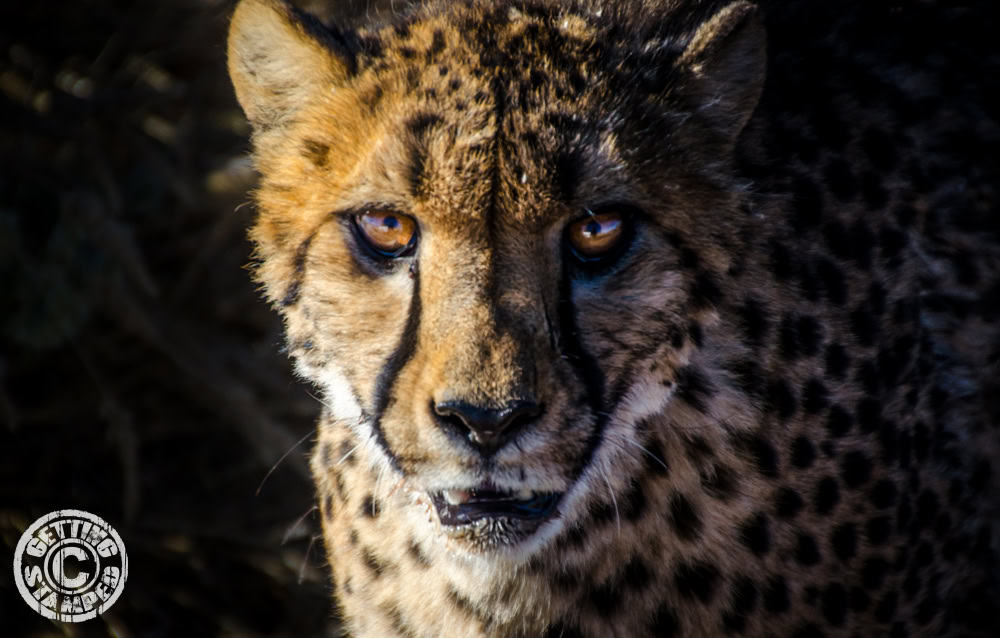
After the distance to your subject, the next most important item to consider is the light source. Most times, you will be relying on natural light to capture your subject since flashes will be too far away to be effective.
In some cases, flashes may not be allowed by law. Your camera’s flash will not carry more than several feet before losing most of its power. Without specialty equipment, a vast majority of the time, you will be relying on the sun to light the animal you are photographing.
Use the sun to light the animal by putting yourself between the sun and the animal. This will ensure you are on the lit side of your subject. This will allow you to use shorter shutter speeds and capture more details in the animal’s face, body, and eyes.
It’s best to instruct your game vehicle driver about this so he knows to look for the light and get you into the right position faster.
#3.) It’s all in the eyes!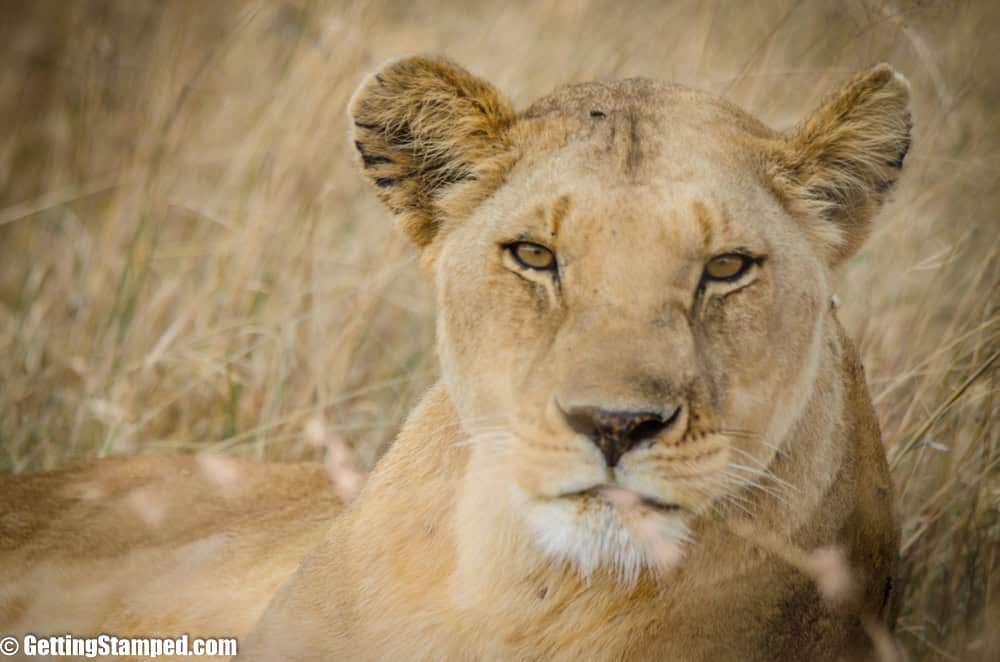
As humans, we are programmed to look into the eyes of whatever we are looking at, including pictures. Take your photos to the next level with eye contact with the animal. Be sure to have your focus set on the eyes as well.
Naturally, our eyes are drawn to whatever is most in focus in a picture, and that should always be the eyes. Be patient and wait for the animal to be looking directly into your camera, and then take as many shots as you can while they’re looking at you. These should be some of your best shots.
#4.) Always arrive on to a new animal with fast shutter speeds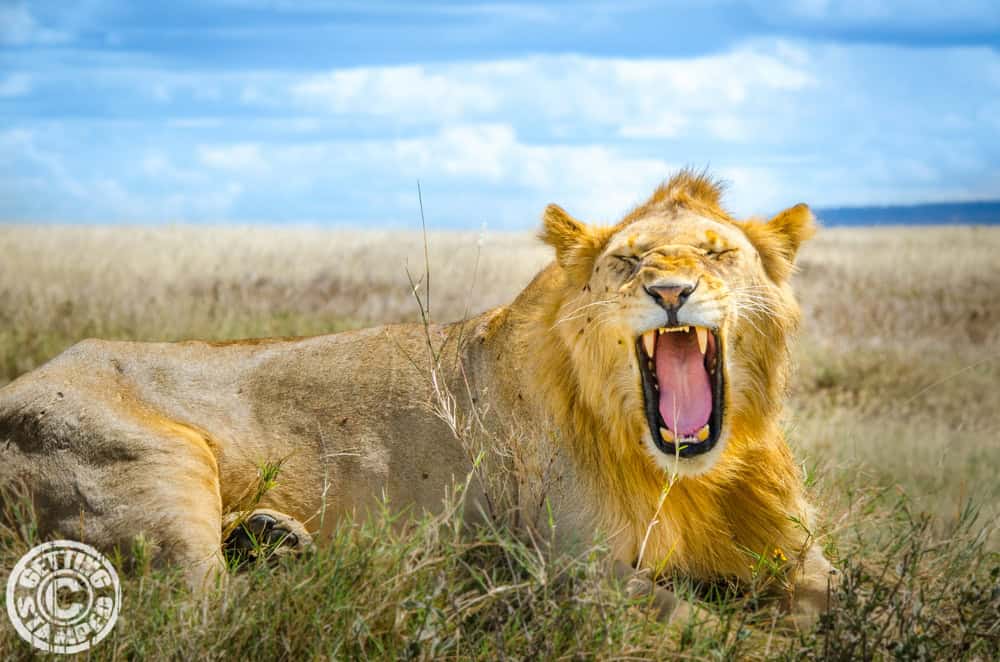
I find it best to have your camera set to a very fast shutter speed between animal spottings because you never know when or where your next sighting will come from. It may mean adding some ISO to your shot, but it’s better than missing it.
Sometimes, you only get a brief moment, and you don’t want to end up with a handful of unusable, blurry photos. When arriving at a new animal, try starting with a fast shutter speed, and once the animal is comfortable with you being there, then take the time to optimize your shot.
#5.) Bring lots of fast memory cards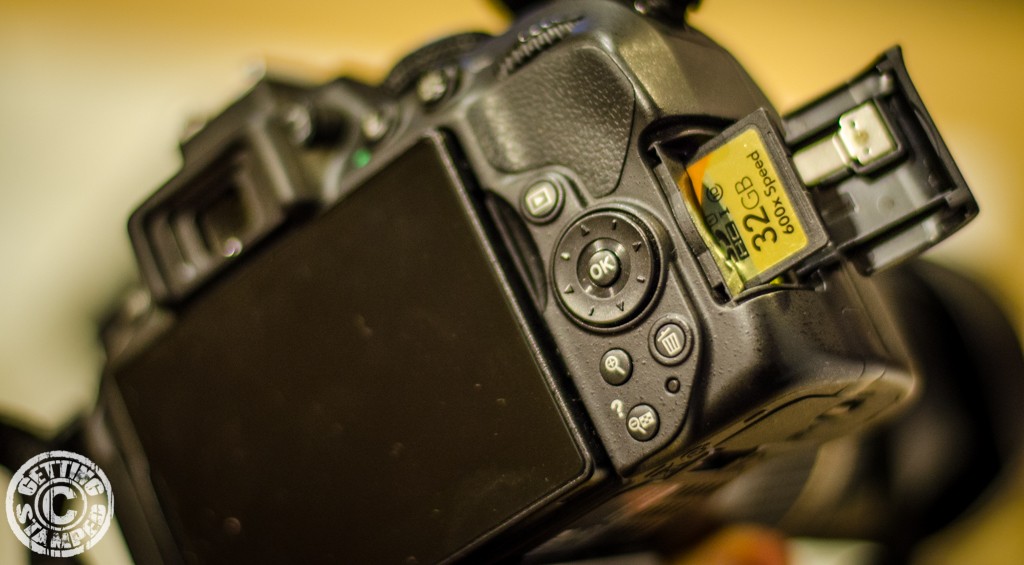
The perfect photo doesn’t just happen; it usually involves and a bunch of waiting followed by a flurry of camera shutters. Be sure your camera and your memory card are ready.
To ensure your memory card doesn’t hold your camera back, be sure to have a 600x memory card (90mb/s) or faster. Your camera only has a small portion of space in its memory to hold photos while transferring them to the SD Card.
If the transfer rate of your card is too slow, your camera will not be able to shoot another photo until the room has cleared. Your camera will also have a limitation, but don’t let your SD card be the bottleneck.
If purchasing a new camera for a safari, the number of frames per second it’s rated for is something I would consider strongly. Memory is very cheap compared to other parts of your gear. Make sure to have plenty of fast cards. I carry several 32 GB 600x SD memory cards. I can fit 800-1000 24mpx RAW files on each.
Now that you know what to expect on an African safari, you have no reason not to go. If you are looking at taking a safari on your own, we cannot recommend Acacia Africa enough.
PIN ME FOR LATER!
